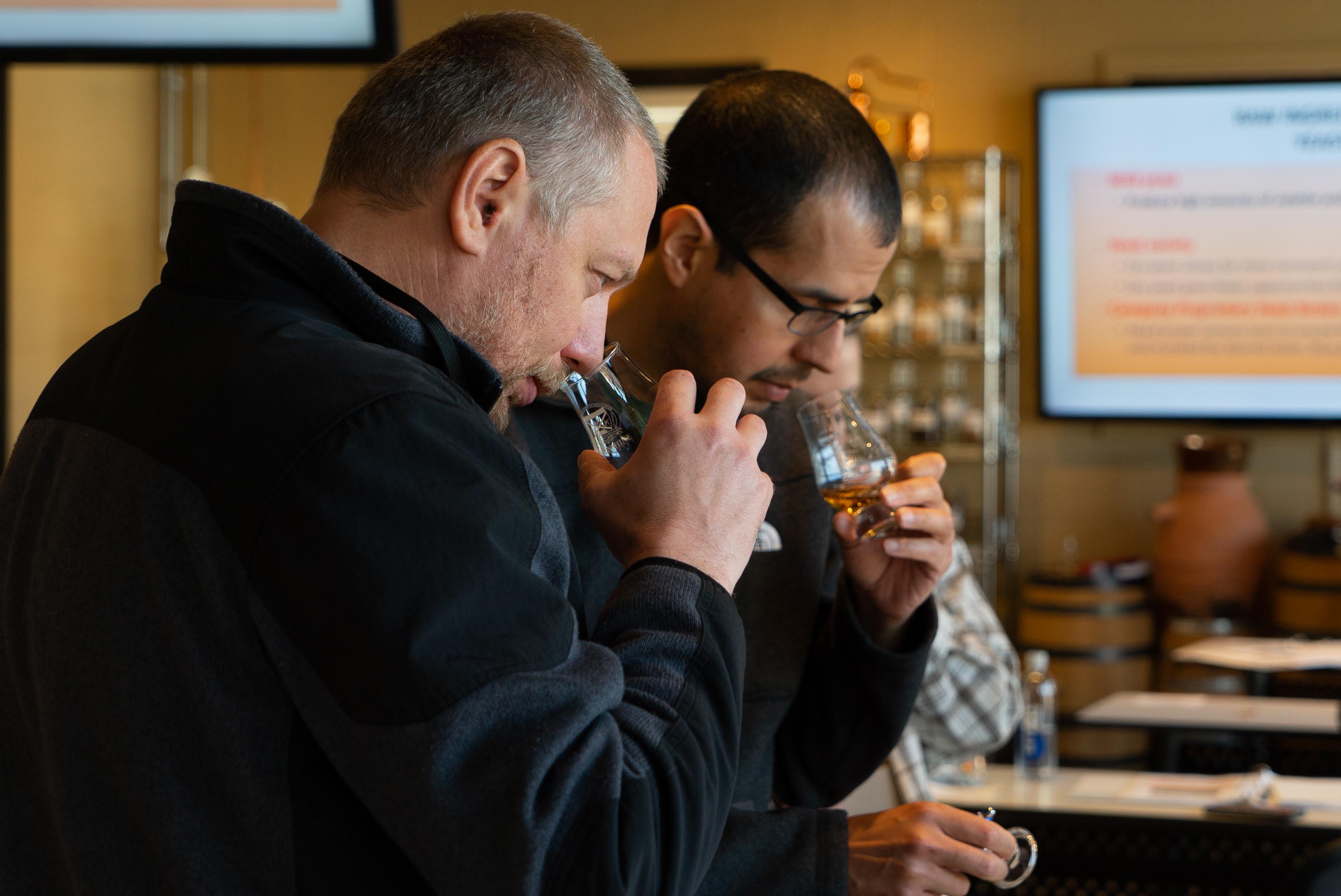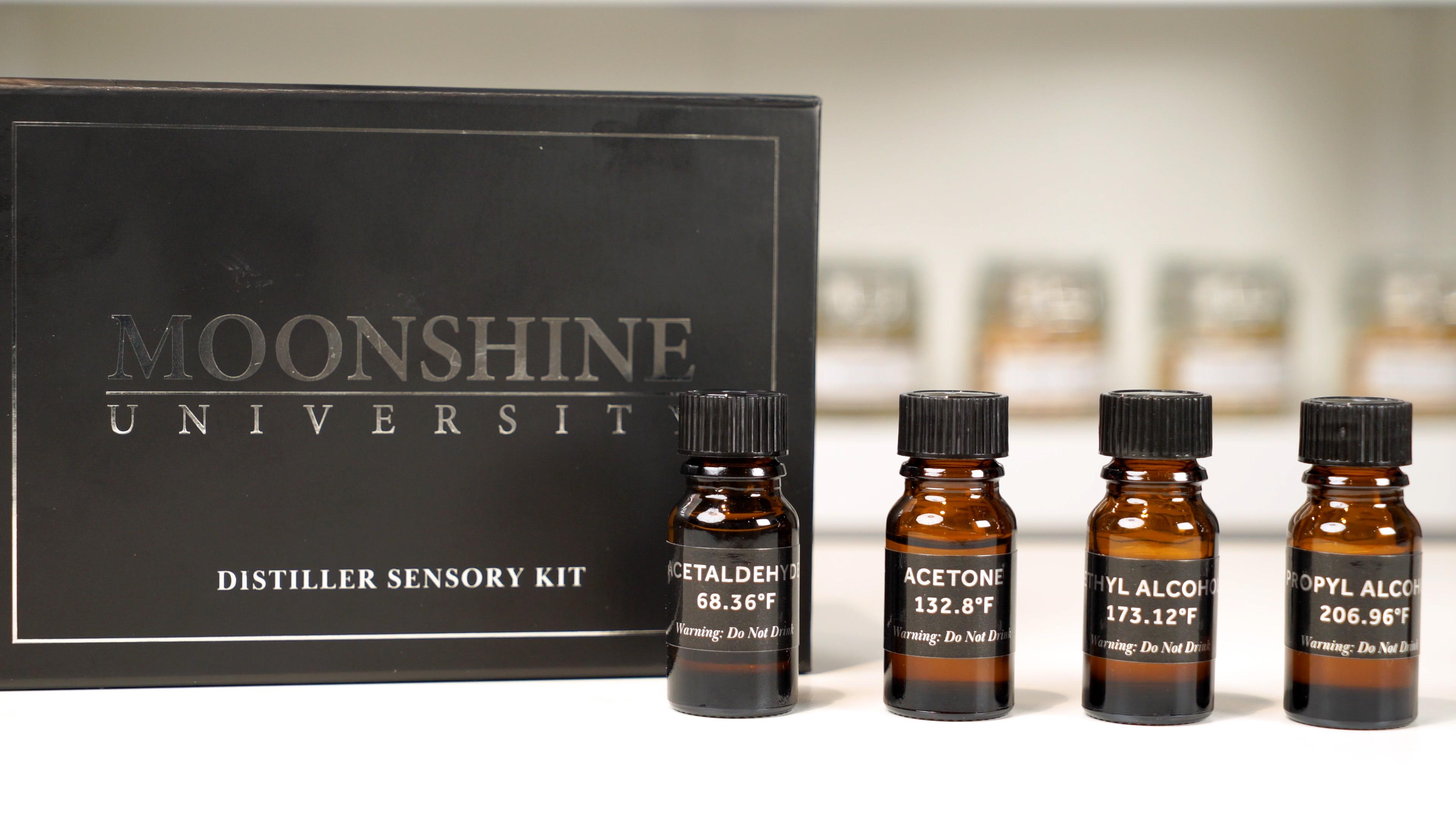
The Art of Non-Alcoholic Spirits
blog
For decades, spirits and cocktails have fostered a culture of craft, connection, and celebration. But over time, cocktail culture has evolved far beyond the buzz!

Those that are familiar with the process of crafting distilled spirits may also be familiar with the 10 common congeners that are created during fermentation, and honed during the distillation run. Each congener has its own distinct personality, rendering unique tastes and aromas to the finished spirit. As the mash, wash, or botanical infusion undergoes distillation, distillers carefully control the concentration of these elements. By separating the heads, hearts, and tails cuts, they shape the final blend of congeners in the spirit. Understanding the influence of these compounds is essential for distillers, quality control personnel, and enthusiasts alike, adding depth to their appreciation of whiskey, rum, gin, and other spirits.

Acetaldehyde - 68.36°F (20.20°C)
This compound, characterized by its remarkably low boiling point, takes the lead in boiling off as the still heats up. Often likened to a "green" aroma like a green apple or freshly cut grass, it leaves a distinct impression. Due to its volatility, acetaldehyde is not typically present in high quantities of distilled products.
Acetone - 132.80°F (56°C)
This compound stands out as one of the most easily recognizable on the list. You might have encountered its potent scent in nail polish remover or paint thinner. Its powerful and headache-inducing aroma is a clear signal for distillers to ensure it's primarily contained within the heads cut.
Methanol - 148.64°F (64.80°C)
Methanol's reputation is widely known from stories of individuals going blind, or worse, after drinking contaminated moonshine. Because of this potential danger, it's crucial for distillers to remain vigilant in detecting when this compound is present during distillation. Complicating matters further, methanol is odorless and tasteless, underscoring the importance of identifying the compounds that precede and follow it during the distillation.
Ethyl Acetate - 170.78°F (77.10°C)
This compound is a frequently utilized solvent found in various products. While its aroma may carry faint fruity notes, at higher concentrations, it becomes overwhelmingly unpleasant. Due to its close proximity to the boiling point of Ethyl Alcohol, it's likely that traces of this compound will be present in the final product.
Ethyl Alcohol - 173.12°F (78.40°C)
This is the ultimate goal of all beverage alcohol production, recognized by many this as the crip, clean flavor and aroma characteristics of Vodka. The hearts cut will contain a large majority of ethyl alcohol, otherwise known as ethanol.
Propyl Alcohol - 206.96°F (97.20°C)
Another familiar aroma, propyl alcohol serves as the primary ingredient in many rubbing alcohols, a staple in most first aid kits. Its distinct scent is widely recognized, sharper than that of ethyl alcohol, yet sharing similarities.
Butyl Alcohol - 243.50°F (117.50°C)
This compound is characterized by a scent reminiscent of lighter fluid or butane. As we progress down this list, the molecules become increasingly "darker" or "heavier" in their aroma characteristics.
Acetic Acid - 244.40°F (118°C)
Commonly known as vinegar, acetic acid carries an unmistakable scent. This compound can pose a challenge during the fermentation process if certain bacteria levels surpass yeast production.
Amyl Alcohol - 280.04°F (137.8°C)
This compound can evoke two distinct sense memories for people. Some perceive a pleasant banana-like aroma, while others encounter a medicinal or glue-like characteristic. It finds application in various products and processes, notably in creating the artificial banana flavor used in Circus Peanuts or Runts.
Furfural - 321.80°F (161°C)
Typically found in the tails section of the distillation run, aged spirits often contain traces of furfural. This is attributed to its dark, roasted aroma reminiscent of caramel, chocolate, or almonds. Due to its substantial size and high boiling point, furfural emerges late in the distillation process.
Understanding these common congeners and their contributions to a finished spirit is paramount. Distillers leverage this knowledge to craft a precise blend of these compounds, bestowing their unaged spirits with unique character and fostering the development of desired flavors in aged products. By discerning these aromas, you embark on a journey of heightened sensory evaluation, enabling you to create more consistent products or savor your favorite pours with deeper appreciation.
Related Content
Spirit Sensing: A Quick Sensory Guide for Whiskey
Scent Memories vs The Communal Lexicon

blog
For decades, spirits and cocktails have fostered a culture of craft, connection, and celebration. But over time, cocktail culture has evolved far beyond the buzz!

blog
So, you want to start distilling with freshly milled grain. Maybe you're tired of paying top dollar for the pre-milled stuff from the malt distributor, and you're ready to invest in the quality, efficiency, and bulk pricing that comes with milling your own whole grain. But where do you start?

blog
You've chosen your whiskey, but now you're faced with the second decision to add ice or enjoy it "neat." There are many schools of thought on this question, but we're going to examine what to factor in to help you make the choice that best suits your palate.